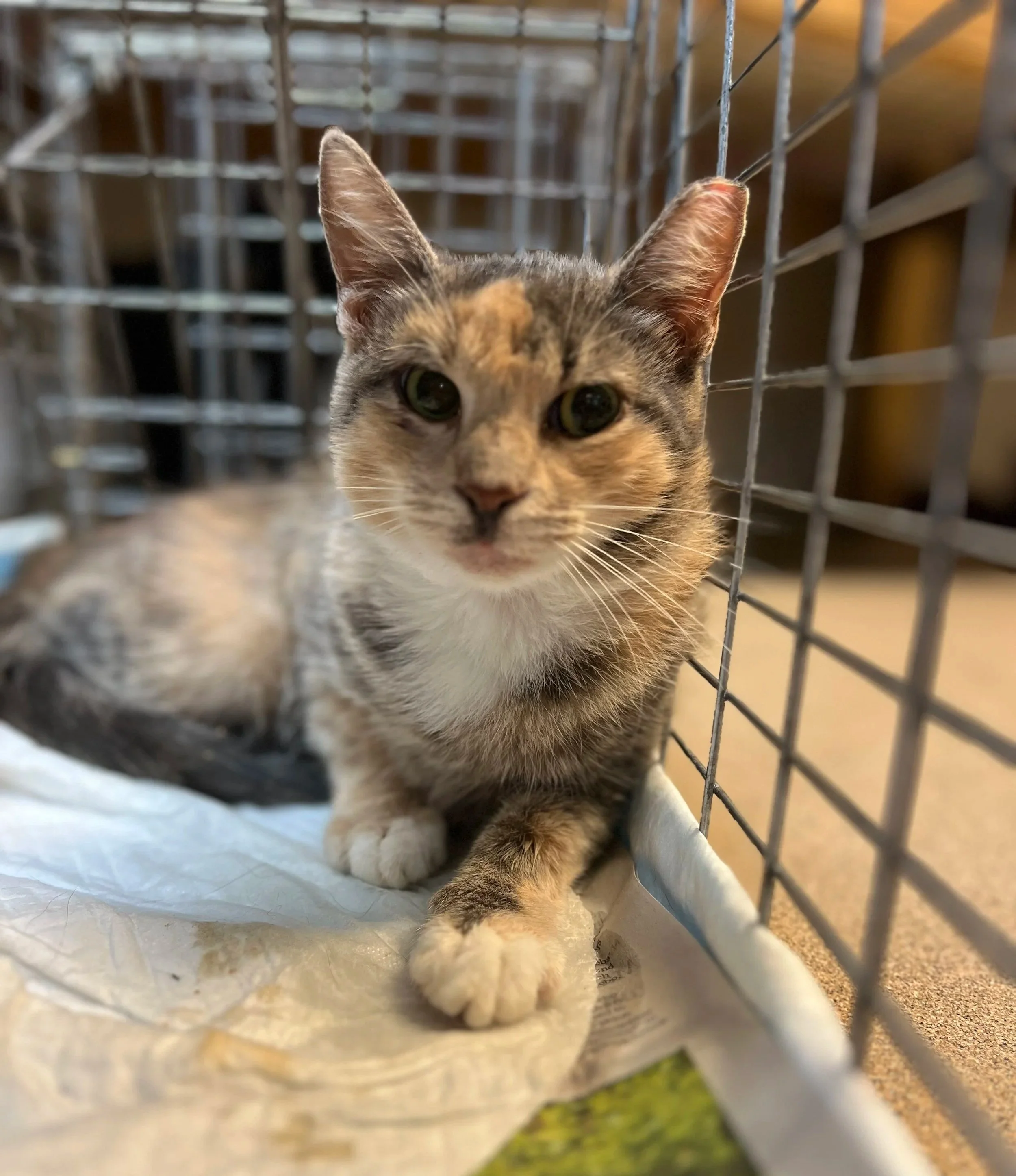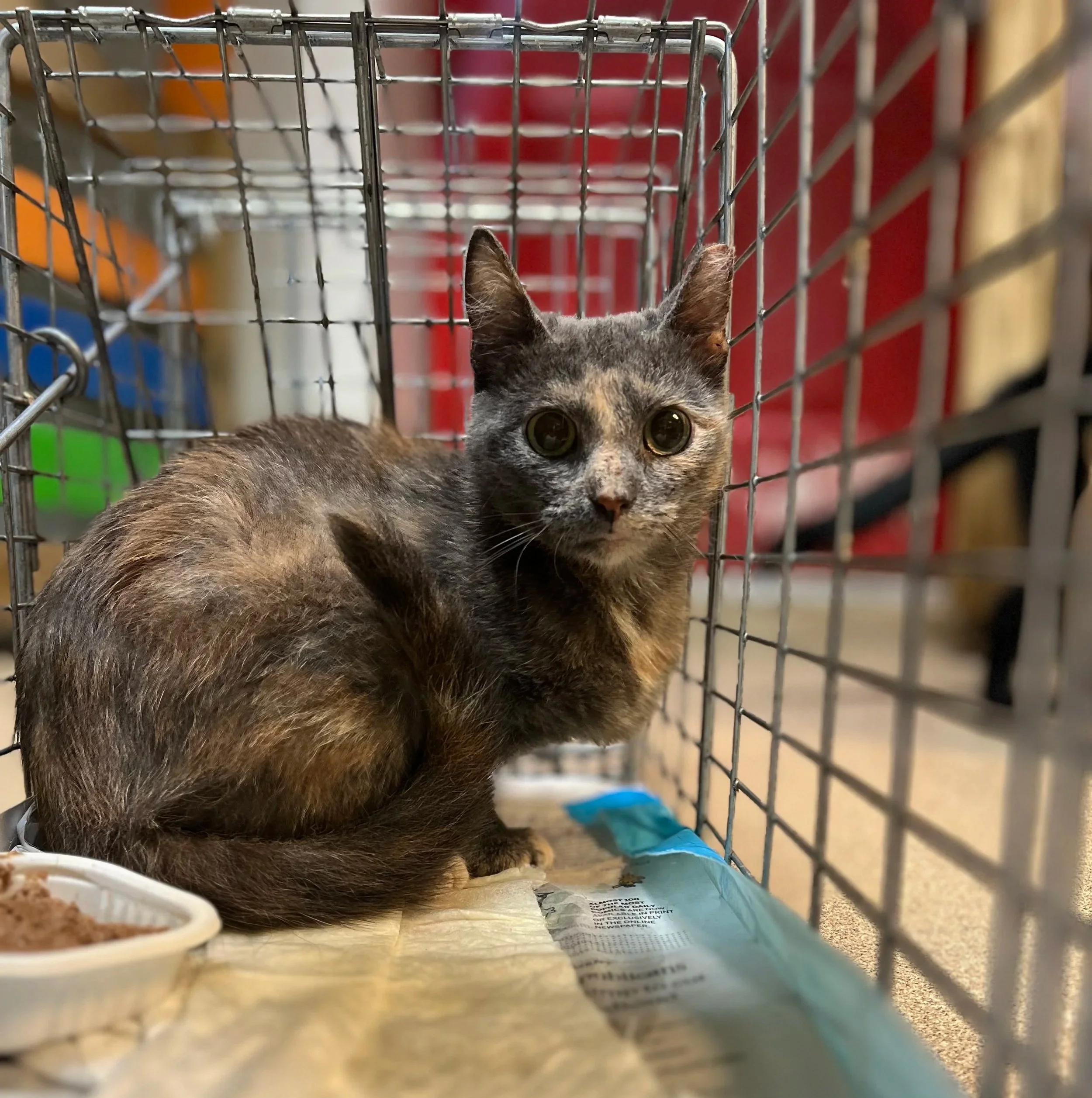Don’t Be a Breeder Feeder, Be a Feeder Fixer…
You’ve seen them—the wide-eyed, scrappy cats darting between dumpsters, huddling under porches, or winding between the legs of a kind neighbor with a food bowl. Feeding them feels compassionate. But here’s the hard truth:
If you feed outdoor cats without also spaying or neutering them, you’re not solving the problem—you’re fueling it.
How Feeding Alone Makes Things Worse
When stray and feral cats have steady access to food, they thrive in the very conditions they need to reproduce. Well-fed cats have more energy, produce more litters, and raise healthier kittens—who quickly grow up to breed again.
One unfixed female can produce up to three litters per year, and her kittens can start reproducing as early as four months old. That one “kindness” can snowball into dozens of hungry mouths.
Why Feeding Bans Don’t Work
Many municipalities, overwhelmed by growing colonies, respond with feeding bans. The idea? Stop the food, stop the breeding.
But in reality, feeding bans only cause suffering. Cats don’t vanish when the food disappears—they starve. They become sick and desperate, and tensions grow between frustrated residents and animal advocates. Shelters still struggle as new kittens are born, and the cycle continues.
There’s a better way.
Why Municipalities Should Support Fixers, Not Punish Feeders
Instead of bans, cities should partner with feeders who are willing to become fixers. When feeders take responsibility for spaying and neutering, colonies become assets rather than liabilities.
Cats are natural pest control. Managed colonies keep rats and mice in check—without poisons or costly exterminators.
Fixed colonies stabilize. Spayed/neutered cats no longer reproduce and protect their territory from newcomers.
Nuisance behaviors drop. Fixed cats fight less, spray less, and make less noise—reducing complaints to animal control.
Public goodwill rises. Residents see their city supporting humane, compassionate solutions instead of punishing kindness.
Budgets stretch further. Every fixed cat means fewer shelter intakes and less taxpayer money spent on endless cycles of control.
Imagine if municipalities issued fines only when feeders refused to fix their cats, rather than simply for providing food. That would target the true root of the problem.
A Proven Model in New York City
This isn’t theory—it’s already happening.
In New York City, Neighborhood Cats and the Community Cats Podcast co-host a virtual TNR Certification Workshop. In just a few hours, participants learn how to trap, neuter, return, and manage colonies responsibly. Graduates receive a certificate, earn access to discounted spay/neuter surgeries, funding assistance, free trap loans, and even join a network of 500+ fellow caretakers for advice and support.
This innovative partnership shows exactly what’s possible when municipalities support caretakers instead of fighting them. And if it can work in the largest city in the country, it can work anywhere. More municipalities should follow NYC’s lead—and more community groups should step up to collaborate.
🐾 Myth vs. Fact: Feeding and Fixing Cats
Myth: Feeding bans reduce cat populations.
Fact: Only spay/neuter (TNR) reduces populations. Feeding bans cause starvation and conflict, while cats continue to breed.
Myth: If you feed outdoor cats, you’re helping them.
Fact: Feeding without fixing fuels reproduction. A well-fed cat means more litters.
Myth: Trapping and removing cats is the fastest solution.
Fact: Removal creates a “vacuum effect”—new cats move in. Fixed colonies keep outsiders away.
Myth: Cats are always a nuisance.
Fact: Fixed cats are quiet, healthier, and excellent natural rodent control.
Myth: TNR is too expensive for cities.
Fact: TNR saves taxpayer money long-term by reducing shelter intake and animal control costs.
Why It Matters
Feeding without fixing creates more hungry cats, more community conflict, and more pressure on already overwhelmed shelters. Feeding with fixing creates healthier, stabilized colonies, fewer kittens born into hardship, and natural pest control for neighborhoods.
Don’t be a breeder feeder. Be a feeder fixer.
Because true kindness isn’t just filling a bowl—it’s breaking the cycle.
Help Turn Feeders into Fixers
Every penny counts—literally. At PennyFix, we believe no cat should go hungry, and no cat should be born into hardship. That’s why we fund spay and neuter programs for both homeless and owned pets—breaking the overpopulation cycle for good.
Your support means fewer kittens struggling to survive and more communities working together humanely.
🐾 Donate today and be part of the solution
[See also: “Why Isn’t Someone Doing Something?” “A Perfect Storm…” “We Can’t Save Them All. But What If We Could Spay Them All?” “Are More Shelters the Answer?” “Why Spaying and Neutering Matters…” “Tips & Tricks for Trapping Cats” “What’s with the Tipped Ear?”]





